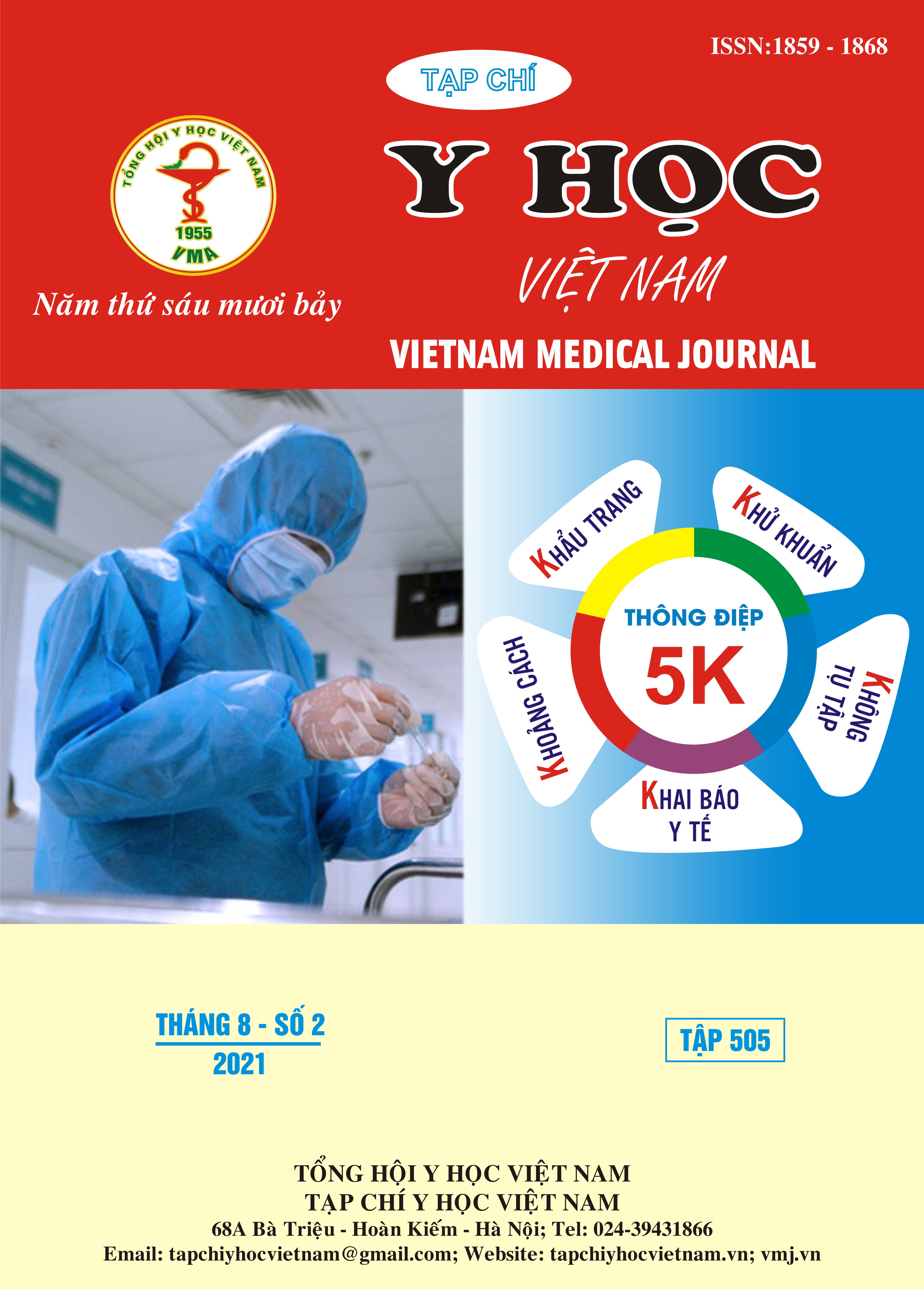TO DESCRIBLE CLINICAL,RADIOLOGICAL FEATURES, AND VALUATE INDICATION OF MINIMALLY INVASIVE MICROSURGERY IN TREATMENT FOR RUPTURED INTERNAL CAROTID ARTERY ANEURYSMS
Main Article Content
Abstract
Objective: To describle clinical, radiological features, and evaluate indication of minimally invasive microsurgical treatment for ruptured internal carotid artery aneurysms. Methods: This cross-sectional prospective study included 72 patients who were brought to Bach Mai Hospital for ruptured internal carotid artery aneurysms, between 9/2015 and 9/2018. Results and conclusion:female/ male:35/37; mean age 55,98 ± 8,96. The warning headache occur in 8,33%. Clinial symptoms: thunderclap headache and sudden in onset (98,61%), nausea and vomiting (58,33%), seizure (4,17%), fear of light (4,17%), loss of awareness (2,78%). Decline in consciousness (25%),meningeal syndrome (81,94%), focal neurological signs (9,72%). 66,67% patients were in clinical grade I, 23,61% in grade II,and 9,72% in grade III. On CTscan, 8,33% hemorrhage in grade 1, 19,44% in grade 2, 72,22% in grade 3. 48,61% aneurysms located on anterior communicating artery and 16,67% aneurysms located on middle cerebral artery, 29,17% aneurysms located on posterior communicating artery, 4,17% aneurysms located on anterior choroidal artery, 1,39% aneurysms located on carotid terminus (bifurcation). Indication of minimally invasive microsurgical treatment for ruptured internal carotid artery aneurysms with clinical grade I-III, hemorrhage in grade 1-3 and size aneurysms ≤ 10mm.
Article Details
Keywords
cerebral ruptured aneurysms, minimally invasive surgery, subarachnoid hemorrhage
References
2. Nguyễn Thế Hào, Phạm Quỳnh Trang, Trần Trung Kiên, (2017), “Nghiên cứu hiệu quả và tính oan toàn của phẫu thuật ít xâm lấn trong điều trị túi phình động mạch não vỡ”, Y học Thành Phố Hồ Chí Minh, tập 21(6): 137-141.
3. Alessandro C., Emanuele P., Roberto D.B., et al. (2013), "Clinical presentation of cerebral aneurysms.", European Journal of Radiology, 82: 1618-1622.
4. Fischer G., Stadie A., Reisch R., et al. (2011), "The Keyhole Concept in Aneurysm Surgery: Results of the Past 20 Years.", Operative Neurosurgery 1, 68: 45-51.
5. Lan Q., Gong Z., Kang D., et al, (2006), “Microsurgical experience with keyhole operations on intracranial aneurysms”, Surg Neurol, 66(S1): 2-9.
6. Perneczky A., Reisch R. (2008), "Keyhole approaches in Neurosurgery: Concept and surgical technique". Spinger Wien NewYork.
7. Saberi H., Hashemi M., Habibi Z., et al. (2011), "Diagnostic Accuracy of Early Computed Tomographic Angiography for Visualizing Medium Sized Inferior and Posterior Projecting Carotid System Aneurysms.", Iran J Radiol, 8(3): 139-144.
8. Wang H., Luo L., Ye Z., et al. (2015), "Clipping of anterior communicating artery aneurysms in the early post-rupture stage via transorbital keyhole approach - Chinese neurosurgical experience.", British Journal of Neurosurgery , Early Online, 1-6.
9. Yamahata H., Tokimura H., Tajitsu K., et al. (2014), "Efficacy and safety of the pterional keyhole approach for the treatment of anterior circulation aneurysms", Neurosurg Rev., 37: 629-636.


